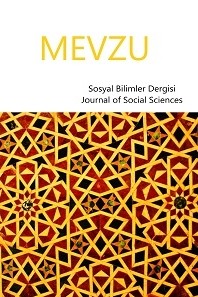Karanlık Viktorya Döneminde Dickens'ın Mumları: Christmas Books eserindeki Ortak Semboller
Bu çalışmanın amacı, karanlık Viktorya döneminde Noel ruhunu yeniden canlandıran Charles Dickens’ın Christmas Books eserindeki ortak sembolleri biçemsel olarak incelemektir. Dickens dönemi insanları, karanlık bir dünyada, Endüstri Devriminin derin etkilerini yaşarken, endüstrileşme, yoksulluk, sınıf ayrımı ve değişen değerlerin sonuçlarından müzdariptiler. Duyarlılığı insan doğası ile birleştiren Dickens, Noel hikâyelerinde, İngiliz yaşamında unutulup giden bir kutlamayı yeniden canlandırmıştır. Karanlık Viktorya dönemi ile harmanlanan bu Noel ruhu ile Dickens, okuyucularına arzulanan daha iyi bir gelecek resmetmiştir. Dickens’ın üslubu, aile uyumu, bağışlama, yardımseverlik, mutluluk, merhamet ve Noel neşesi konuları ile okuyucusunu eğlendirirken, toplumdaki uyuşmazlıkları ve insanlığın hatalarını sorgulama ve yargılamayı sağlar. Ancak, derin yapıda, mesajlarını açık bir şekilde vermek yerine, Charles Dickens, beş Noel hikâyesindeki sembol kullanımı ile okuyucularını vermek istediği mesaja yönlendirir. Bu amaç doğrultusunda, bu çalışma Dickens’ın, Christmas Books eserindeki hikâyeleri aracılığıyla, karanlık Viktorya döneminde hapsolmuş okuyucuları için bir mum yaktığını gösteren ortak sembolleri açıklamayı amaçlar.
Anahtar Kelimeler:
Viktorya Dönemi, Noel Ruhu, uyuşmazlıklar, semboller
Candles of Dickens in the Darkness of Victorian Era: Common Symbols in Christmas Books
The aim of this study is to stylistically analyze the common symbols in Charles Dickens’s Christmas Books, which revived the Christmas spirit in the dark Victorian era. Experiencing the vast impacts of Industrial Revolution, people in Dickens’s time were suffering from the consequences of industrialism, poverty, class distinctions and shifting values within a dark world. Upon combining sentimentality towards human nature, Dickens, in his Christmas stories, revived a festival which faded away from English life during the 19th c. Through this blending of a Christmas spirit in the dark Victorian era, Dickens drew the desired picture of a better future for his readers. His ‘Dickensian’ style enables questioning and judging the discrepancies in the society and the defects of humanity while entertaining the reader with the concerns of family harmony, forgiveness, charity, happiness, compassion and Christmas joy. Yet instead of presenting his messages explicitly, in the deeper structure, Charles Dickens directs his readers through the messages with the use of symbols in his five Christmas stories. To this end, this study aims at clarifying the common symbols in the stories of Christmas Books to suggest that Dickens lights a candle via his stories for his readers who were imprisoned in the dark Victorian age.
Keywords:
Victorian Era, Christmas Spirit, discrepancies, symbols,
___
- ACKROYD, P. (2002), Dickens. London: Vintage Books.
- ___________ (1990), Dickens: A Biography. London: Sinclair- Stevenson.
- CHURCHILL, R. C. (1982), From Dickens to Hardy. (Ed.) Borris Ford. Penguin Books.
- COLLINS, P. (1964), Dickens and Education. London: Macmillan and Co. Ltd.
- DICKENS, C. (1995), Christmas Books. Wordsworth Classics.
- GITTER, E. (1999), The Blind Daughter in Charles Dickens’s ‘Cricket on the Heart’, Studies in English Literature, 1500-1900, 39 (4), 675-689. Retrieved from www.jstor.org/stable/1556268.
- GLANCY, R. (1980), Dickens and Christmas: His Framed-Tale Themes, Nineteenth Century Fiction 35 (1), 53-72.
- HIBBERT, C. (1967), The Making of Charles Dickens. Suffolk: The Chaucer Press.
- LALUMIA, C. (2001), Scrooge and Albert: Christmas in the 1840s, History Today 51 (12), 23-29.
- Yayın Aralığı: Yılda 2 Sayı
- Başlangıç: 2019
- Yayıncı: Ali SEVER
Sayıdaki Diğer Makaleler
Siyasi ve Hukuki Açıdan Milli Mücadele
Ribâyı Anlamak İslam İktisadında Faiz Ed. Abdulkader Thomas
Ebu'l-Berekat el-Bağdadi Felsefesinde Tanrı Kitap incelemesi
Osmanlı Milleti Oluşturma Projesi ve Türkleşme Teşebbüsleri
Atatürk Dönemi İmam-Hatip Mektepleri Üzerine Bir Değerlendirme
Karanlık Viktorya Döneminde Dickens'ın Mumları: Christmas Books eserindeki Ortak Semboller
